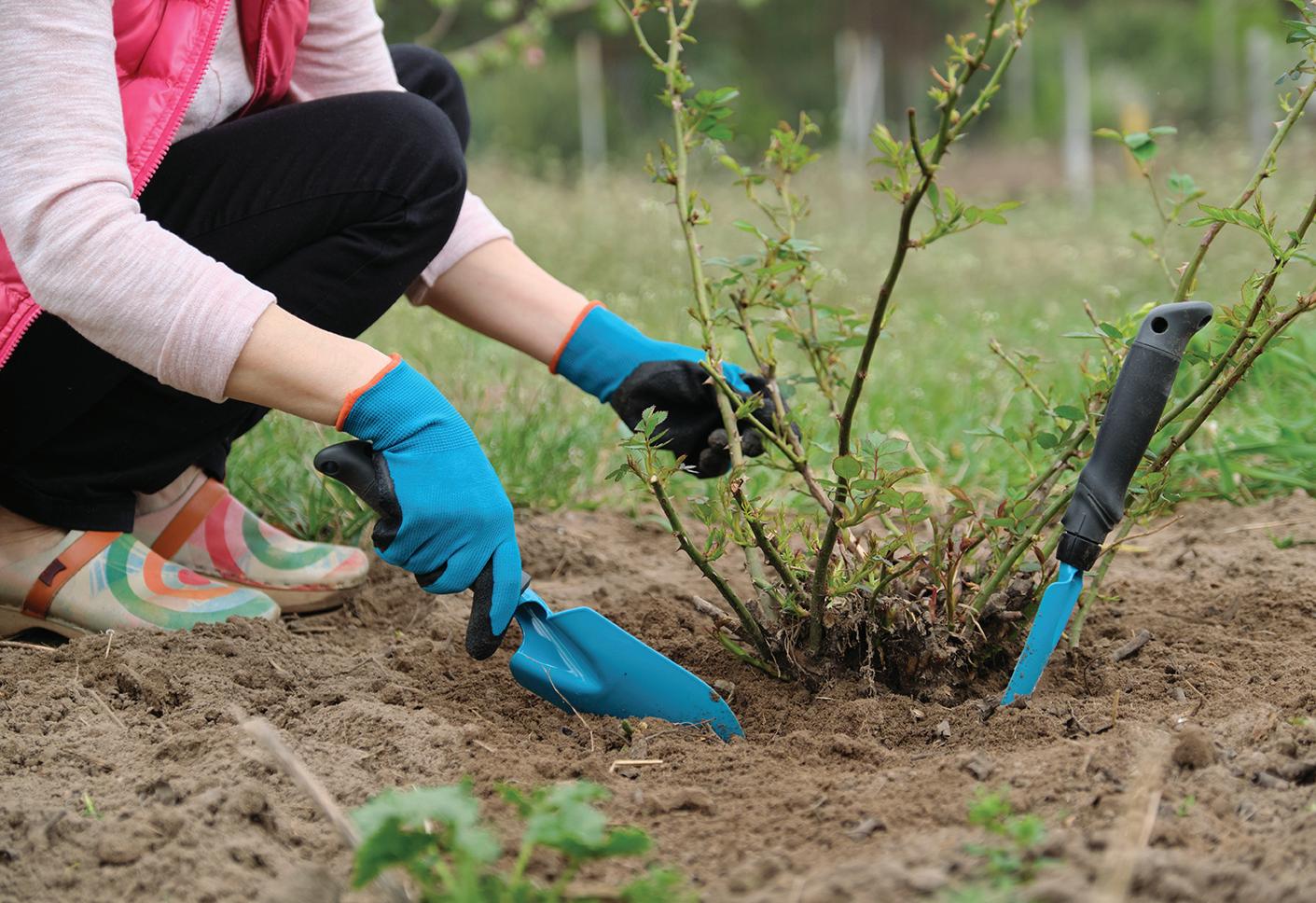
3 minute read
February: The month to fall in love with roses
Cut roses, the most universal floral symbols of love, are perennial favorite gifts for Valentine’s Day, but if you’re looking for a truly perennial gift of love, consider the rose bush.
Roses, which fossil records indicate have existed for at least 35 million years, have stolen hearts since time immemorial. Charmed by their fragrant and flagrantly gorgeous blooms, humans began cultivating roses 5,000 or more years ago for use as ornamental and medicinal plants and to use their scents and flavors in perfumes, foods and drinks. Roses also took root in myths and legends and became symbols of love, passion, perfection, beauty and, depending on their color, other human emotions and qualities.
Today roses are the most popular flower bestowed on Valentine’s Day, which is why some 250 million cut roses flood the world market each February. Garden retailers also have an abundant supply of bare root and potted roses in stock ready for late winter and spring planting.
Thanks to eons of evolution and cultivation, that selection includes hundreds of rose species and thousands of rose hybrids encompassing a wealth of diversity in plant and bloom sizes, shapes, colors and forms. According to Alabama’s own Redneck Rosarian (AKA Chris VanCleave), that means everyone can find a rose to love.
VanCleave’s relationship with roses began when he was a child helping his mother tend her rose garden, which became a source of solace and therapy for them both after the sudden death of his father. VanCleave carried that sense of respite and refuge into adulthood and, combined with his a passion for creating fetching landscapes, he has become an internationally adored rose expert.
“In a hectic world, there is something therapeutic about digging in the soil and creating beautiful blooms for all to enjoy,” he said.
While roses are near and dear to VanCleave, some gardeners are wary of planting them because of their reputations as demanding, exacting plants, especially when it comes to managing disease issues. However, thanks to the many hardy, disease- and drought-resistance varieties now on the market, VanCleave said it’s easy to love—and grow—roses.
move on to growing relatively low-maintenance shrub and old garden roses (which produce multiple blooms per stem and come in many different bloom types), medium-maintenance floribunda roses (which also produce multiple blooms per stem and multiple bloom types) and higher-maintenance hybrid tea roses (the classic florist-type roses that produce a single rose per stem).
Can’t quite decide? Take some time this year to see roses growing in public gardens or attend rose shows and tours. (Alabama has five rose societies—Wiregrass, Gadsden, Huntsville Twickenham, Ramer and Birmingham— that hold annual rose shows, tours and other educational events.)
According to VanCleave, the key to success with roses, aside from planting them in a well-drained soil with access to sufficient sunlight, is to choose roses that match your level of time commitment. “The more time you have, the greater your success will be with roses that require more maintenance,” he said.
For novice or busy gardeners, that may mean starting with easy-care shrub roses such as Drift®, Knock Out® or OSO Easy® selections. “They basically need an annual haircut (pruning) and weekly watering if it doesn’t rain,” VanCleave said.
Gardeners focused on sustainable practices can look toward native and naturalized rose species or Earth-Kind® roses, a collection of roses selected by the Texas AgriLife Extension Service with the goal of reducing chemical and water use in the landscape.
As gardeners gain experience with roses, VanCleave said they can gradually

You can learn more about roses through VanCleave’s Rose Chat podcast and his website, RedneckRosarian.com. (He also appears quarterly on Birmingham’s Channel 6 Good Day Alabama program.) Information is also available through the Alabama Cooperative Extension System, The American Rose Society, Heritage Rose Foundation and American Garden Rose Selections organizations.
And whether you plant them this year or not, you should definitely take time to appreciate—and smell—the roses that will be wooing and wowing us here in Alabama throughout the spring, summer and into the fall.
February Tips
Plant dormant fruit and nut trees.
Plant shrubs, roses, hardy annual flowers and summer- and fall-blooming bulbs.
Prune hybrid tea roses and summerand fall-blooming shrubs.
Avoid pruning early blooming shrubs.
Sow seed or plant transplants for leafy greens, root crops and early peas.
Finish ordering summer vegetable and flower seed.
Begin prepping garden soil and equipment for the coming season.








